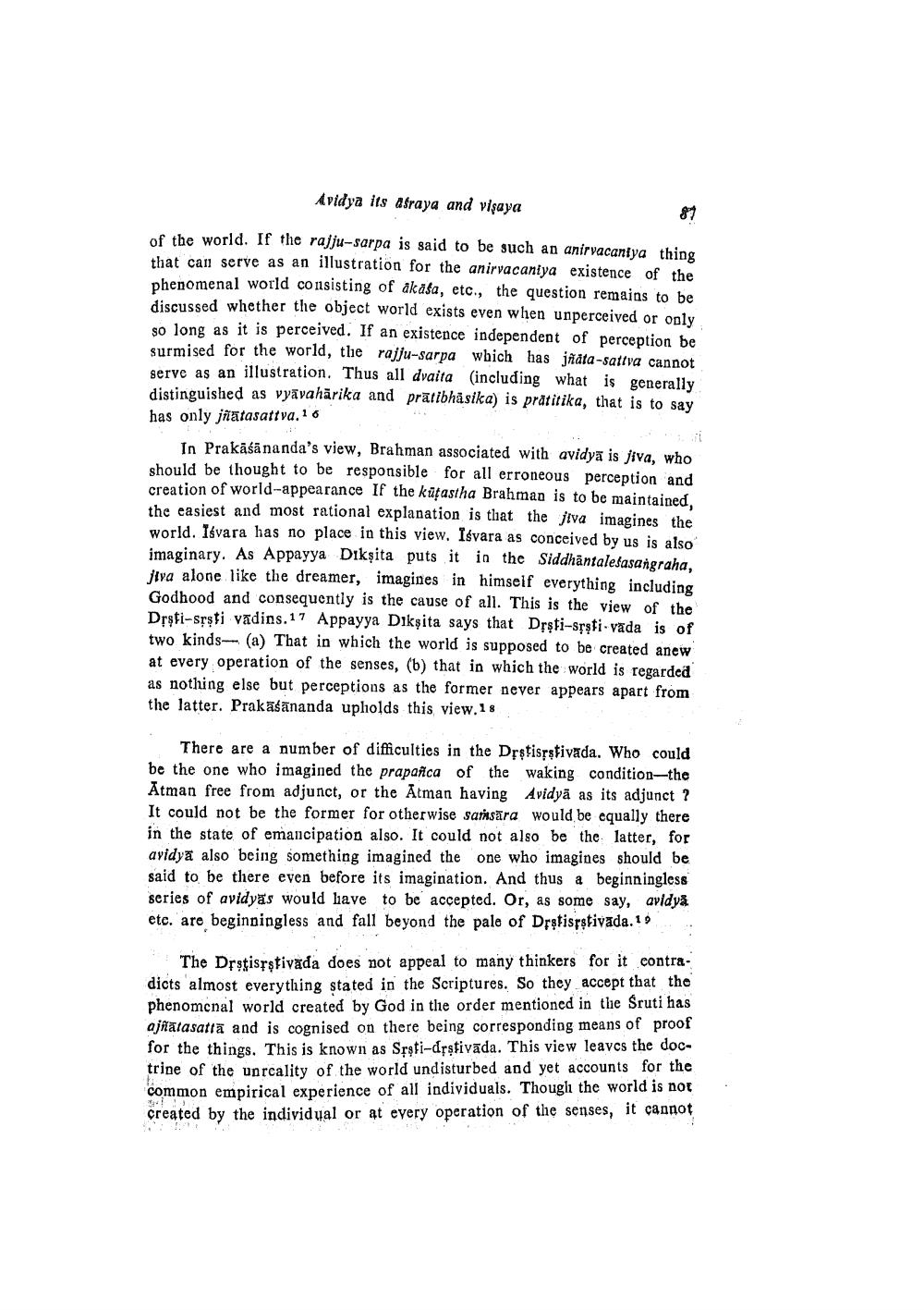________________
87
Avidya Its atraya and vişaya
of the world. If the rajju-sarpa is said to be such an anirvacantya thing that can serve as an illustration for the anirvacaniya existence of the phenomenal world consisting of akada, etc., the question remains to be discussed whether the object world exists even when unperceived or only so long as it is perceived. If an existence independent of perception be surmised for the world, the rajju-sarpa which has jñata-sattva cannot serve as an illustration. Thus all dvaita (including what is generally distinguished as vykvahārika and prättbhasika) is pratitika, that is to say has only jäätasattva,
In Prakāśānanda's view, Brahman associated with avidya is jiva, who should be thought to be responsible for all erroneous perception and creation of world-appearance If the kafantha Brahman is to be maintained, the easiest and most rational explanation is that the jiva imagines the world. Isvara has no place in this view. Isvara as conceived by us is also imaginary. As Appayya Dikita puts it in the Siddhāntalefasangraha, jtva alone like the dreamer, imagines in himself everything including Godhood and consequently is the cause of all. This is the view of the Drsti-spati vadins. 17 Appayya Diksita says that Drafi-srati-vada is of two kinds (a) That in which the world is supposed to be created anew at every operation of the senses, (b) that in which the world is regarded as nothing else but perceptions as the former never appears apart from the latter. Prakasananda upholds this view.1s
There are a number of difficulties in the Drstisṛstivada. Who could waking condition-the Avidya as its adjunct?
would be equally there
be the one who imagined the prapanca of the Atman free from adjunct, or the Atman having It could not be the former for otherwise samsara in the state of emancipation also. It could not also be the latter, for avidya also being something imagined the one who imagines should be said to be there even before its imagination. And thus a beginningless series of avidyas would have to be accepted. Or, as some say, avidya etc. are beginningless and fall beyond the pale of Dratispstivada. 19
The Drstisṛṣṭivada does not appeal to many thinkers for it contradicts almost everything stated in the Scriptures. So they accept that the phenomenal world created by God in the order mentioned in the Sruti has ajñatasatta and is cognised on there being corresponding means of proof for the things. This is known as Srsti-drstivada. This view leaves the doctrine of the unreality of the world undisturbed and yet accounts for the common empirical experience of all individuals. Though the world is not created by the individual or at every operation of the senses, it cannot




